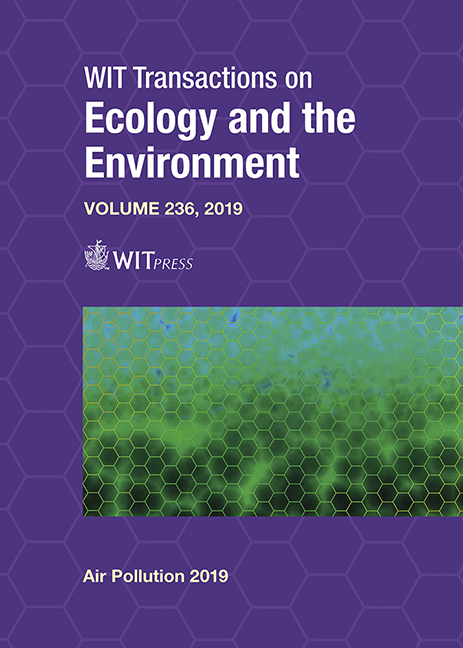INTEGRATED ENVIRONMENTAL HEALTH RISK ASSESSMENT FRAMEWORK FOR FIREWOOD-INDUCED INDOOR AIR POLLUTION
Price
Free (open access)
Transaction
Volume
236
Pages
13
Page Range
179 - 191
Published
2019
Size
279 kb
Paper DOI
10.2495/AIR190181
Copyright
WIT Press
Author(s)
KHOMOTSO SEMENYA, FANNIE MACHETE
Abstract
This paper presents an integrated environmental health risk assessment framework to assess risks associated with firewood-induced indoor air pollution as an environmental health hazard. The combustion of firewood is associated with the emission of particulate matter, volatile organic and inorganic compounds or gases that are hazardous to human health and the environment. To date, there have been numerous studies and environmental health risk assessment approaches used to measure, monitor and assess environmental health risks associated with firewood-induced and related pollutants. However, many of the aforementioned risk assessment methods followed a narrow approach, thus rendering these studies methodologically one-sided. Consequently, some of these studies drew inferences about the air pollutants and the associated human health risks without identifying the tree species from which such firewood was harvested, as well as the different properties of wood and combustion characteristics including the dynamics of the fireplace where such combustion took place. Some of these studies failed to identify a specific community where particular firewood is used, since different firewood species grow in different areas and are therefore commonly used in communities where the wood is easily found. Most experimental studies on firewood-induced air pollution examined firewood emissions from undefined or unknown wood species. It is for these reasons that the current study aimed to close these methodological gaps by developing a comprehensive integrated environmental health risk assessment framework that considers the firewood user households, common types of wood and conditions of their harvesting, combustion and emissions in the laboratory environment. This study integrated observations, ethnobotanical meta-analysis and experimental study designs into one comprehensive integrated environmental health risk assessment (IEHRA) framework to assess the risks associated with exposure to volatile organic compounds (VOCs) from firewood combustion. The IEHRA was applied in the Senwabarwana villages to assess environmental health risks associated with selected firewood-induced volatile organic compounds. The results were sufficiently comprehensive to identify common ethnobotanical plant species used for firewood in the study area, the frequency of fire making, the conditions in which fire was made and common health problems experienced by firewood user households. Finally, different species of firewood were burnt in a laboratory under simulated kitchen conditions and VOCs were collected for analysis. The results of the VOCs samples differentiated high- and low-risk firewood species.
Keywords
indoor air pollution, environmental health, environmental health risk assessment, exposure assessment, risk characterisation, toxicity assessment, volatile organic compounds





